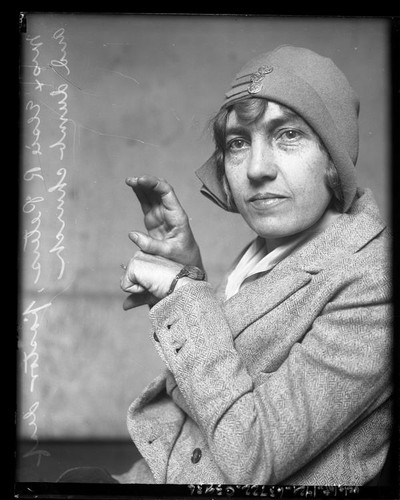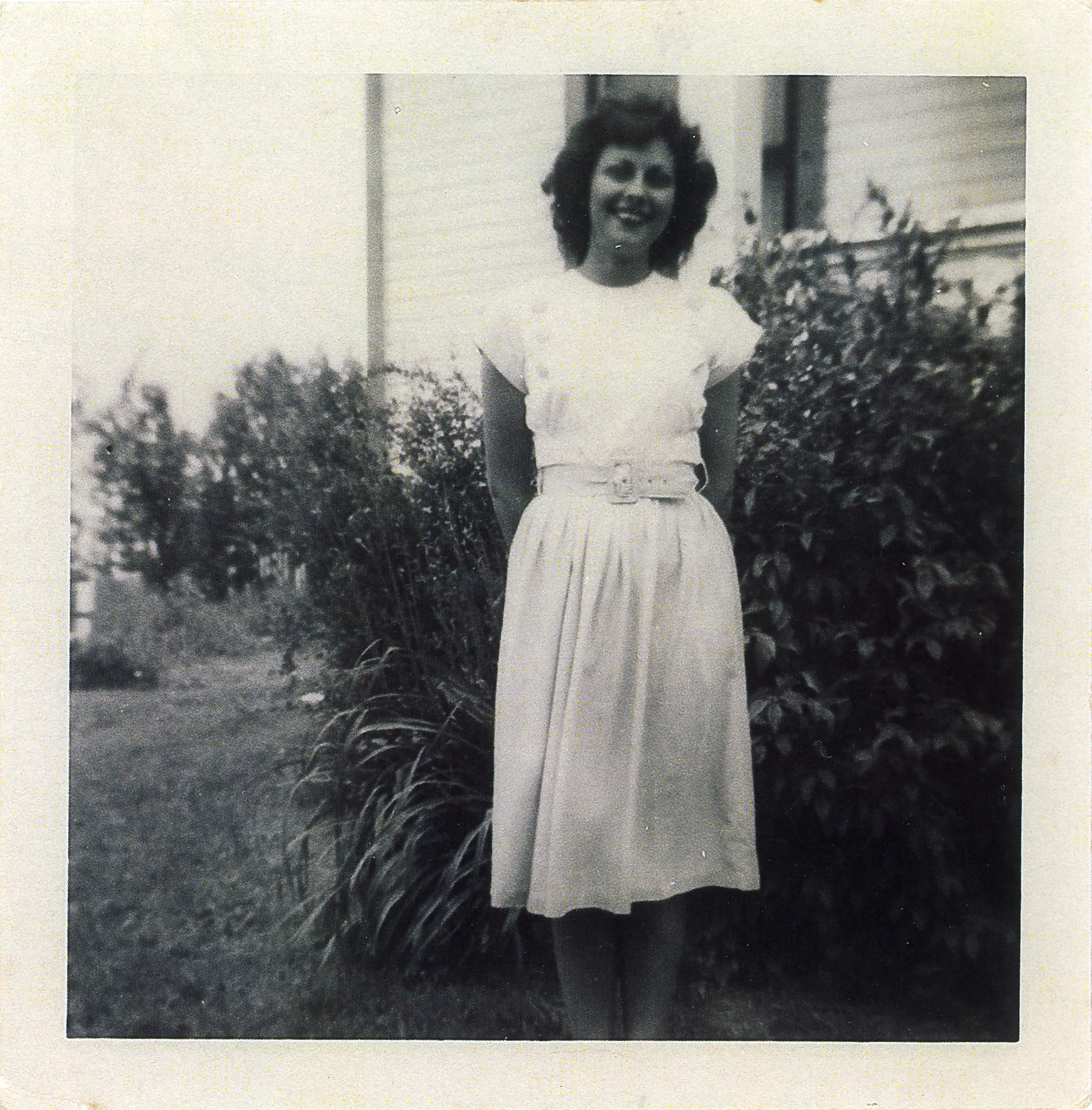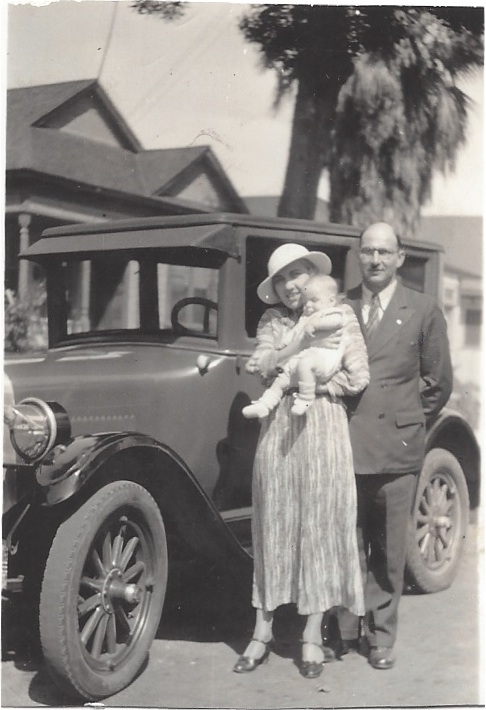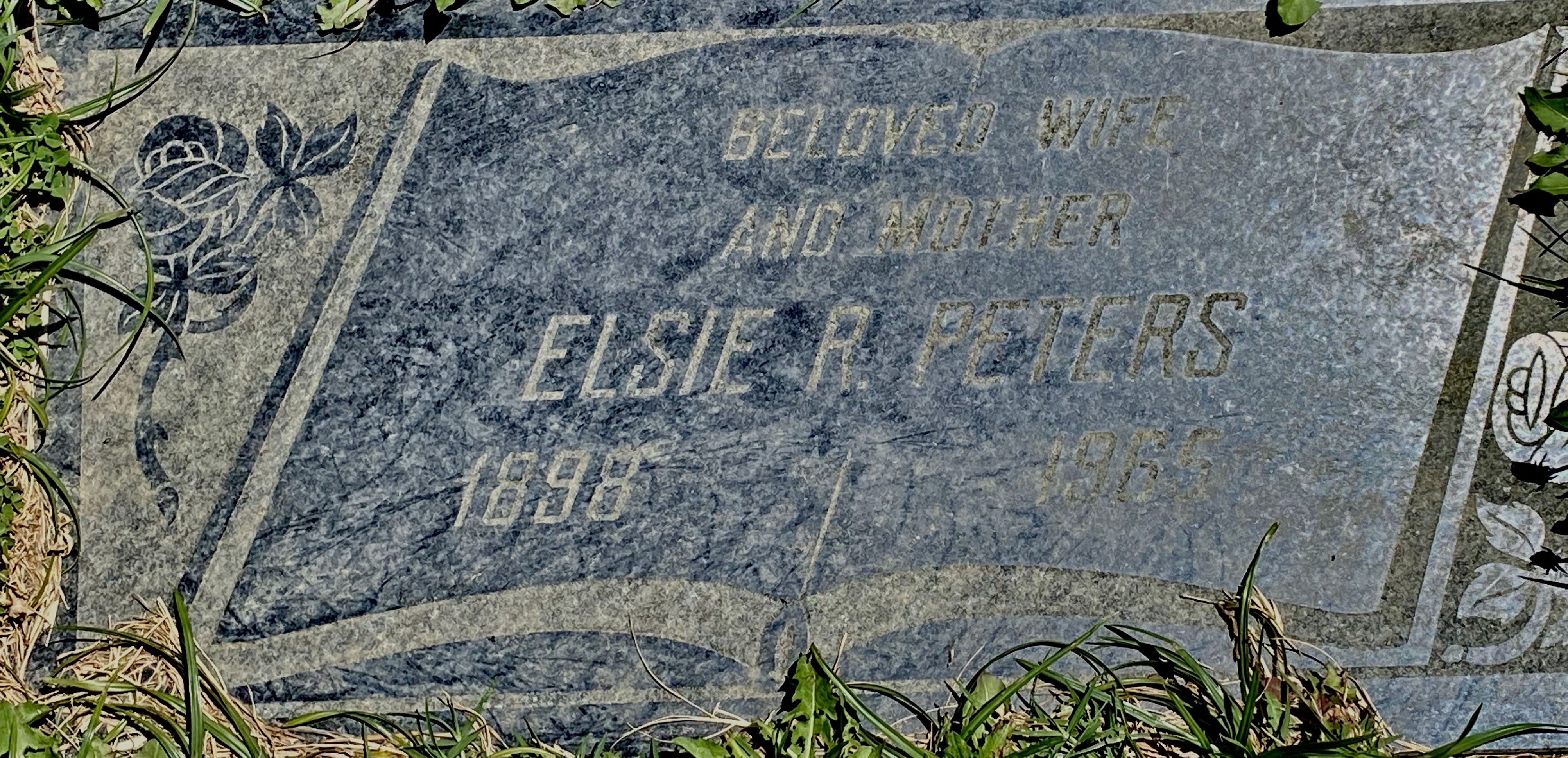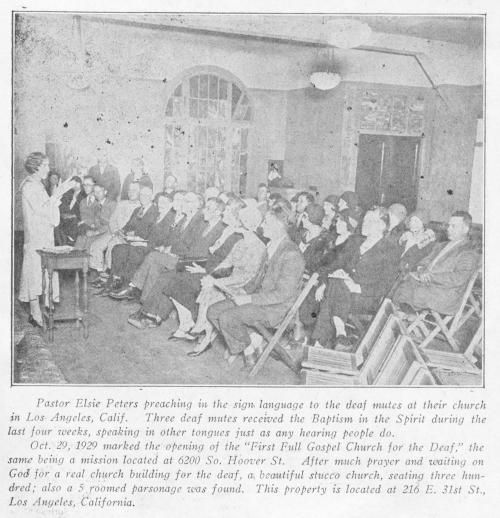Peters visited a local deaf couple, Sullivan and Addie Chainey, who gladly welcomed her into their home. They told her that they often felt overlooked. It was difficult for them to make friends. Through their friendship with Peters, the Chaineys eventually accepted Christ and also entered into deaf ministry.
Elsie's husband, Grover, worked for the railroad. His job meant they had to relocate to a new city every few years. In each new city, Elsie immersed herself in ministry. When they moved to Fort Worth, Texas, in 1920, Elsie brought with her a passion for working with deaf people. She could not keep quiet about the calling God had placed in her heart.
Assemblies of God leaders in Texas confirmed Elsie's calling and, in 1924, ordained her to the ministry. In 1926, she secured the use of the Y.M.C.A. building in Fort Worth and held what she deemed to be the first Pentecostal revival services for the deaf. Deaf came from across the Midwest to attend the services. She later held similar revival campaigns across America, helping to meet the spiritual needs of the deaf and raising the profile of the deaf community within the church.
In the late 1920s, Elsie and Grover moved to Los Angeles. Elsie saw the move as an opportunity to reach the city's large deaf community, which had been largely ignored by other churches. They launched the first Assemblies of God church started specifically for the deaf — First Full Gospel Church for the Deaf. The first service was held in a small mission on Hoover Street on Tuesday, October 29, 1929. That same day the stock markets crashed, which resulted in the Great Depression. But the small mission flourished and soon relocated to a 300-seat stucco church with parsonage. The April 11, 1931, issue of the Pentecostal Evangel included a report of this first Assemblies of God deaf congregation.
From this inauspicious beginning, the Assemblies of God ministry to the deaf emerged. Lottie Riekehof began teaching sign language at Central Bible Institute in 1948, and Home Missions (now U.S. Missions) created a division for Deaf Ministries in 1953. In 2014, the Assemblies of God included 33 deaf culture churches and 538 churches with some type of ministry in working with deaf people in the United States.
Peters visited a local deaf couple, Sullivan and Addie Chainey, who gladly welcomed her into their home. They told her that they often felt overlooked. It was difficult for them to make friends. Through their friendship with Peters, the Chaineys eventually accepted Christ and also entered into deaf ministry.
Elsie's husband, Grover, worked for the railroad. His job meant they had to relocate to a new city every few years. In each new city, Elsie immersed herself in ministry. When they moved to Fort Worth, Texas, in 1920, Elsie brought with her a passion for working with deaf people. She could not keep quiet about the calling God had placed in her heart.
Assemblies of God leaders in Texas confirmed Elsie's calling and, in 1924, ordained her to the ministry. In 1926, she secured the use of the Y.M.C.A. building in Fort Worth and held what she deemed to be the first Pentecostal revival services for the deaf. Deaf came from across the Midwest to attend the services. She later held similar revival campaigns across America, helping to meet the spiritual needs of the deaf and raising the profile of the deaf community within the church.
In the late 1920s, Elsie and Grover moved to Los Angeles. Elsie saw the move as an opportunity to reach the city's large deaf community, which had been largely ignored by other churches. They launched the first Assemblies of God church started specifically for the deaf — First Full Gospel Church for the Deaf. The first service was held in a small mission on Hoover Street on Tuesday, October 29, 1929. That same day the stock markets crashed, which resulted in the Great Depression. But the small mission flourished and soon relocated to a 300-seat stucco church with parsonage. The April 11, 1931, issue of the Pentecostal Evangel included a report of this first Assemblies of God deaf congregation.
From this inauspicious beginning, the Assemblies of God ministry to the deaf emerged. Lottie Riekehof began teaching sign language at Central Bible Institute in 1948, and Home Missions (now U.S. Missions) created a division for Deaf Ministries in 1953. In 2014, the Assemblies of God included 33 deaf culture churches and 538 churches with some type of ministry in working with deaf people in the United States.







